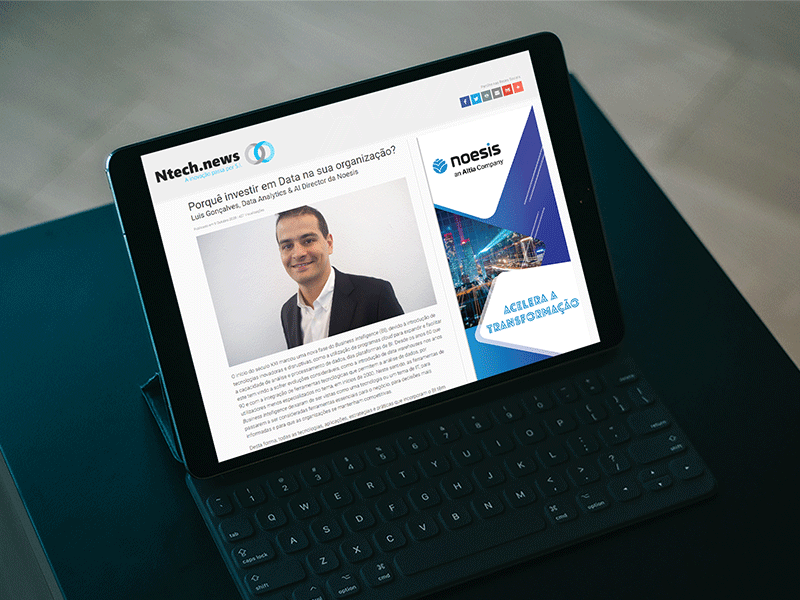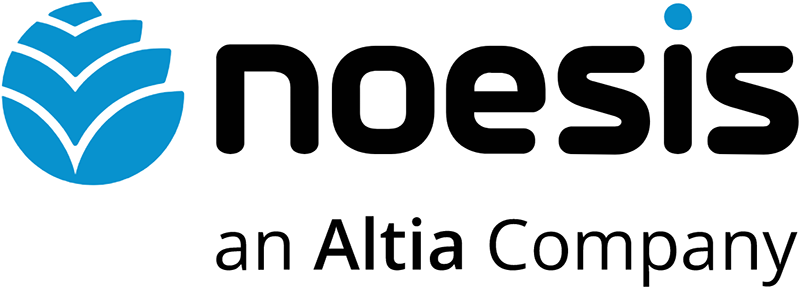
By Luís Gonçalves, Data Analytics & AI Director at Noesis
Inscreva-se no Lisbon Data & AI Forum
The beginning of the 21st century marked a new phase for Business Intelligence (BI), due to the introduction of innovative and disruptive technologies, such as the use of cloud programs to expand and facilitate the analysis and data processing capacity of BI platforms. Since the 1960s, this has undergone considerable developments, such as the introduction of data warehouses in the 1990s and the integration of technological tools that allow data analysis, by users less specialized in the theme, in the beginning of 2000. In this sense, Business Intelligence tools are no longer seen as a technology or an IT theme, but are considered essential tools for the business, for more informed decisions and for organizations to remain competitive.
In this way, all the technologies, applications, strategies and practices that incorporate BI are intended to collect, analyze, integrate and present information related to the business of each organization. Thus, business intelligence allows the organization to have access to crucial information, in a more agile way, for the functioning of its different areas of operation. These allow an analysis of large volumes of data using OLAP tools, ensuring greater support for decision making and forecasting future events.
Specifically, a BI system can present the organization with information relevant to the financial level with insights from the financial date relating to the half-yearly and annual budget and the identification of potential problems to prevent their occurrence. With regard to sales of services or products, it is possible to obtain detailed analytics regarding, for example, conversion rates. The information provided also allows the responsible teams to be able to concretely identify what is and is not working, thus being able to act accordingly, improving performance and results.
More recently, we have seen an evolution of these solutions to Self-Service models that allow the focus and ownership of data analysis to be no longer solely on IT, in addition to the emergence of Embbebed Analytics solutions that allow to lead to many more users and in a single access point, analytics relevant to that user, embedded in the normal workflow. A very concrete practical example is to enable the user to be in an operating system to schedule a visit to a customer, for example, and, at the same time, to have access to all the analysis and analytical information that the organization has about that same customer, be they products related, degree of sales / purchases, open invoices, etc.
Artificial Intelligence and the new generation of Analytics
The future brings us tools that make the world of analytics even richer with the inclusion of Artificial Intelligence (AI) and Machine Learning (ML) processes that allow us to discover new insights relevant to the business, “hidden” in the data.
Nowadays and in the future vision of Intelligence and data, the reference to Business Intelligence is a reduction in the face of technological advances. We are increasingly talking about Data Analytics & AI and the need to define models capable of incorporating more data, more data sources and more tools.
A new generation Analytics system has to incorporate the ability to automate data extraction and transformation processes, clean up and have Data Quality processes cataloging and enriching the original data (for example, detecting coordinates and adding relevant location information ). On the other hand, it must also be able to discover patterns in the Information and allow the users to go, through natural language processing (NLP) to the data model, by asking questions. These models, which tend to be self-generated, will allow to increase the range of analytical applications by removing entry barriers and focusing the user on information analysis and decision making, with evident gains for the business. New solutions can be made available to users through mobile apps or even smart devices like Alexa.
From Artificial Intelligence to Augmented Intelligence
The concept of Augmented Intelligence is this, not to restrict users to previously developed analysis models and to use the latest generation algorithms and capabilities to focus the user in decision making, with much more information inputs. Scenario simulation data, new visualizations and associations, hidden patterns, predictive analysis, among others.
This technological evolution, associated with the growing volume of data, opens up enormous potential for organizations, the future involves combined actions between the power of artificial intelligence and the perspicacity and sensitivity of humans and that will be the key to greater value creation.
The urgency of having data analysis models as a priority already existed before the pandemic, but with this it became clear to organizations, whatever their size or sector of activity, that it is no longer enough to improve operational efficiency and monitor closely your consumers / customers. It is mandatory to have a focus on data analysis and the ability to use all available information, to find the best answers and make the best decisions. It is undoubtedly important to be prepared to act and not be reactive to changes and demands from customers.



